335i Vs M3 – Which Is Best?
BMW’s 335i and M3 are two entirely different beasts, but which one is going to suit you best? We’re putting them head-to-head in this guide.
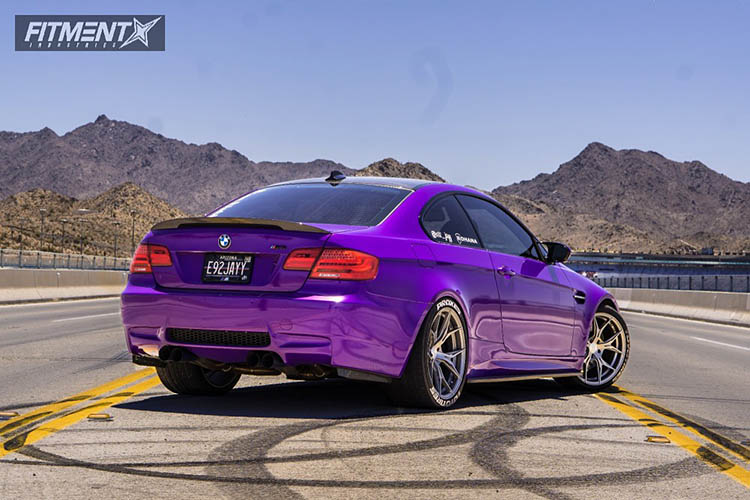
- Introduction
- Stock 335i vs M3
- Tuned 335i vs M3
- Reliability & Daily Driving
- Interior
- Price
- Conclusion
Introduction
Known as the “Ultimate Driving Machine”. there’s no question for the vast majority of the German-legend’s worldwide fanbase that the M series is the most desirable of all their offerings, with the M3 being the most cherished variation of them all.
With the earlier models, the E30, E36, and E46, the differences between the standard models and the M series were so drastic that deciding between them was a no-brainer.
If you could afford it, then the solution was simple - get the M3.
It stood head and shoulders above the rest, and it certainly provided the ultimate driving experience for the money.

However, with the introduction of the BMW E90, E92, and E93 models (or E9x, to keep things simple), BMW narrowed the gap between the mighty M-car, and the ‘lesser’ models on the market, as they introduced their brand-new BMW 335i.
Suddenly, the ‘lesser’ model didn’t seem so unimpressive when it stacked up against the M3, which provided it with a well-deserved spot on our best sleeper cars list.
With the stock three-liter twin-turbocharged inline-six engine capable of pushing out over 300hp alongside a 0-60mph time of 5-seconds flat, it’s certainly no slouch.
It’s also worth considering that these figures are from the engine in stock form, and on top of that, they’re also incredibly tuner-friendly. More so than the M3, in fact.
This drastic change left many BMW enthusiasts wondering whether the M-car still maintained the prestigious status it once did, especially with the E9x variants featuring a naturally-aspirated V8 powerplant for the first time, which changed the game entirely.
Now that the E9x-series 335i’s and M3’s are becoming more affordable than ever, it’s the perfect time to consider which of these incredible feats of German engineering are going to be best suited to your needs.
Although we could spend forever discussing the differences between the various models, we’ll mostly be taking an in-depth look at the E9x models in this guide. We’ll also consider how the E46 and F82 M3’s compare.

Let’s take an in-depth look at BMW’s 335i and M3 to see whether the M cars are still worth the additional price-tag in the modern-day.
Stock 335i vs M3
Although we don’t often keep our cars stock here at Drifted, we understand that many enthusiasts prefer to go down this route, so we’ve put together some of the positives and negatives that come with both models.
Power
Although there are several different variables when comparing the engines of the 335i, we’ll do our best to keep things simple.
From 2006-10, the BMW E90, E91, E92, and E93 335i models featured the 302-311hp, 295-311lb/ft torque (with the upper figures from independent testing) N54 engine.
For the 335is models, a new variant N54B30 entered the market, with increased power for the 2011-2013 E92 335is.
From 2010-13, the E90, E91, E92, and E93 335i models came with the newer, arguably less tuner-friendly N55 engine, which featured a single twin-scroll turbocharger.
Although the two engines’ power figures are similar, the N54 is often the more popular choice.
Both the N54 and N55 engines have fantastic tuning potential, but it’s the M3’s 414hp naturally-aspirated S65 V8 that unsurprisingly earns the power victory when it comes to keeping the cars in stock form.
![]()
If you’ve got big bucks to splash, then that gap gets even more considerable, with the M3 GTS achieving 444hp.
However, we’ll soon learn that power isn’t everything when comparing the 335i with the M3.
With just a few simple and relatively inexpensive upgrades, the 335i engines can quickly reach 425hp without any significant impacts on the reliability levels, which we’ll discuss more in-depth in the next section.
The hardcore purists will undoubtedly be keen to tell you that there’s so much more than the M car has to offer than merely comparing power figures.
Both cars undoubtedly have exceptional engines, whether it’s the N54 or N55 V6s or the S65 V8.
If you’re fortunate enough to get behind the wheel of both, you’ll notice that they produce their power entirely differently.
Where the M3’s naturally-aspirated V8 growls to 8,500rpm, providing consistent power the whole way. The speedometer continues to climb at an alarming rate until you’re clocking license-losing speeds.
On the other hand, the 335i has the more ‘launch you into the seat’ type feeling, which feels far more than the little-over 300hp that it provides.
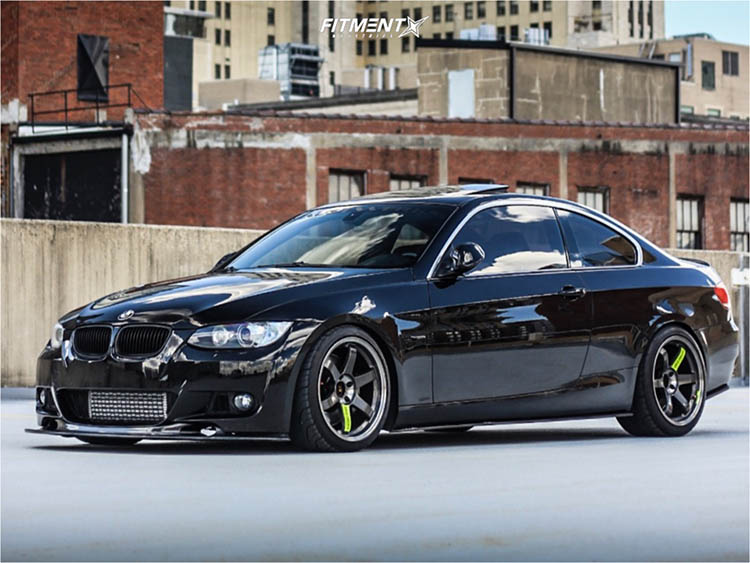
However, the power soon dies off after around 5,500rpm, and you’ll likely feel as though you’re abusing the engine if you continue pointlessly wringing it beyond this to the potential 7,000rpm redline.
The M3 feels like a real driver’s car, but if you’re transitioning from the 335i, you’ll need to remind yourself not to be afraid to keep the revs high, as this is where the M3 excels, and the 335i somewhat disappoints.
It takes a little pushing, but once it gives, it gives in abundance - you’ll need to treat it a little rougher, and it’ll keep begging for more.
Sure, you can bolt on a few mods and head to your local tuner, but there are insane hours of research and development that goes into each M division car, and you’ll struggle to make a real M car rival out of your tuned 335i, especially it comes to hitting the track.
With that said, if you’re using your car every day and you’re never hitting the track, the low-down, neck-whipping power of the 335i may well be the perfect solution for your needs.
Sound
The M3 with your foot planted on full-song sounds incredible, screaming its way to the redline, even with the stock exhaust.
Sound is another bonus that comes with the V8 powerplant. It’s far more exotic than you’d expect, which adds to the comprehensive package that the M3 provides, which, we’ll warn you, is incredibly addictive.
You’ll probably get a load of hate from the bystanders, but you’ll soon get used to the M car envy.
Don’t get me wrong here – the N54/N55 engines also sound fantastic, but until you’ve revved the hell out of the S65, you won’t know what you’re missing.
Handling
From suspension geometry to lightweight body panels (including the carbon-fiber roof) and additional chassis-reinforcement and bracing, there’s more to the M3 than the quad-exhausts and a big bonnet bulge, despite what your eyes may want you to believe.
Although there are plenty of aftermarket options to get your 335i handling impressively well, you’re going to need a rather substantial bank balance if you think you’ll be able to compete with BMW’s finest suspension experts.
When BMW designed the M3, it was made to be pushed to its limits on the track. In comparison, the 335i is more of an ideal all-rounder, with fast-road driving in mind.
The M3 features heavier steering leaving it feeling far more refined and planted in the twisties, alongside predictable throttle-control on acceleration from the naturally-aspirated V8.
When it comes to handling, the F80 M3 took the competition up another level, but this is mainly due to the addition of electric power steering, which certainly isn’t to everyone’s taste.
If you’re looking for the ultimate handling, consider the F80, but given that it’s an entirely different feel, make sure you grab a spirited test drive first.
Looks & Design
Sure, you could argue that the M3’s lightweight panels could be replicated with aftermarket alternatives for the 335i, such as a carbon fiber hood or trunks.
However, the M3 does have that chunky, aggressive look to it in stock form that’s hard to replicate without spending big bucks on something along the lines of a wide-arch kit, which would be adding weight rather than losing it.
From the big bonnet bulge, the wide-arches, and the quad-exhausts, it certainly has a significant presence on the road.
Although they both feature the same wheelbase and dimensions, the only identical elements between the M3 and the 335i are the chassis, doors, and trunk.
Looks are a potential deal-breaker for many, given that you’re far more likely to see a stock-body 3-series than you are an M3.
For that reason, we would consider whether you’re likely to wish you’d opted for an M3 further down the line.
As car enthusiasts, we feel that something is appealing about having the rarer options on the road. Whether you’d prefer an M3 or a uniquely-tuned 335i will depend on your personal preferences.
Tuned 335i vs M3
As we discovered when putting the cars head-to-head in stock form, they’re both built for entirely different purposes.
The M3 was built to be thrashed to the redline and master the twisties.
On the other hand, the 335i has been designed with everyday efficiency and practicality in mind.
But, what if you want to turn that on its head and achieve the full potential that BMW’s 335i has to offer?
Thankfully, the 335i has far more to offer than BMW provided it with, despite being no slouch right out of the showroom, and it’s quickly unlocked at an extremely reasonable cost.
When it comes to finding the perfect car for you, some will prefer the highly-strung, 8,500rpm redline of natural-aspirated power that the M3 provides over the tire-shredding N54, which could well be the deciding factor.
For road excitement with minimal effort, the 335i is arguably the more exciting car in a straight line at license-retaining speeds thanks to the turbochargers, whether it’s the twin-turbo N54 or the N55.
When you add the ease of tuning into the mix, things get even more exciting.
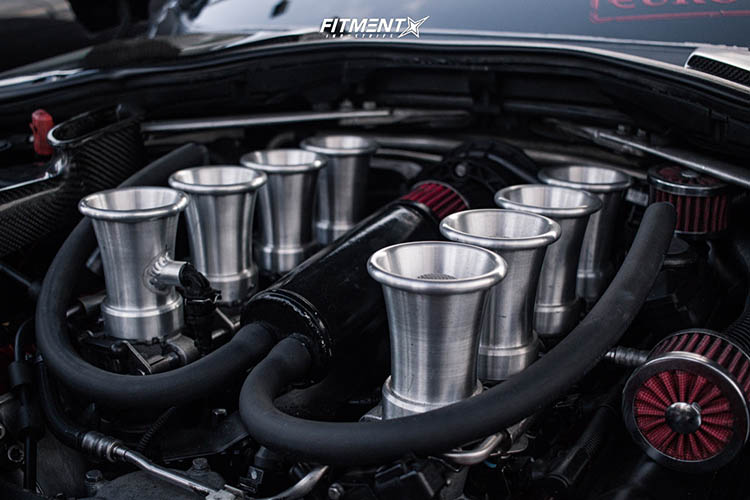
Given that the 335i typically runs around 8psi, with a mild and conservative setup made with efficiency and reliability in mind, it leaves plenty on the table.
With a simple Stage 1 tune, you can expect to reach nearer 350hp right away, and Stage 2 will bring you around the impressive 400hp mark, which soon begins eyeing up the M3’s power figures.
Although the general recommendation is to consider internal upgrades over 450hp on the 335i, to get into this range can potentially be achievable with around $2,000 worth of mods, or perhaps even less with the right contacts.
From there, we’ve even seen owners achieve up to 700hp on stock internals on the N54 engine, but you’ll need to be prepared to start throwing five-figure sums at the engine, which would then leave you questioning whether an M3 is likely to be the better choice.
Although the N55 is still an excellent engine, you’ll likely be seeing five-figure sums getting around the 500hp-range. However, 400-425hp is still achievable with the necessary bolt-on mods and a tune.
Given that both 335i engines can achieve the same power figures as the M3 with just a few simple upgrades and a tune, it’s easy to see why so many opt for 335i’s as their weapon of choice.
Would a tuned 335i be a serious contender against the M3 on a drag strip? Definitely. We wouldn’t even be surprised if we saw it take the win, and that alone will undoubtedly be enough to seal the deal for some potential owners.
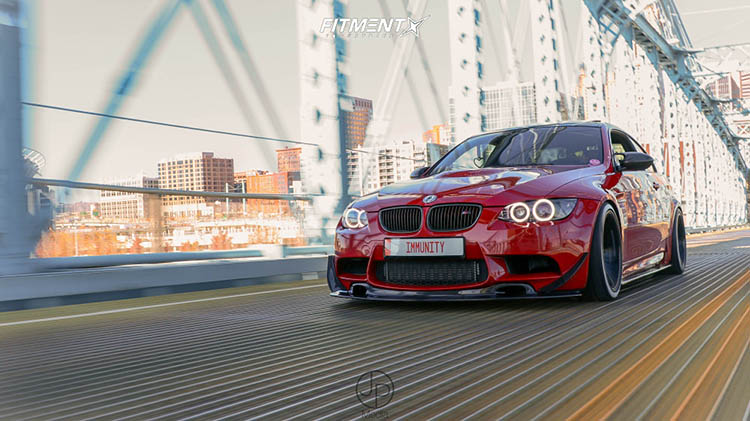
However, with that said, when it comes to the twisties and the all-around oil delivery, limited-slip differential, suspension, and braking package, the 335i is certainly no match for the M3.
Although it’s possible to fit E9x M3 suspension to the 335i, you’re likely to spend several thousand getting it there. Even then, you still won’t have the additional chassis bracing or weight-saving parts of the M3.
Of course, there are plenty of aftermarket options when it comes to suspension upgrades, but bolting on a set of coilovers won’t be enough to compete with years of German engineering in the corners.
If you’re seriously considering building an M3 track-slayer, there’s going to be a lot more to consider to make the car handle well.
By the time you’ve spent huge chunks of cash, you’ll likely be considering whether the M3 would’ve been the more rational consideration from the start.
In just about every scenario in road driving, a tuned 335i may well represent the better choice, but when it comes to pushing the limits at the track, we would certainly be opting for the M3 platform from the start.
If you’ve got an enormous budget, then the M3 also has plenty of tuning potential, and there are many out there running over 700hp on stock internals thanks to forced induction.
The guys over at BimmerBoost did precisely this, and it appears the 335i owners ruffled their feathers along the way, too.
In this post, they claimed they’ll give $5k to any N54 street car that can beat their supercharged M3.
They stated: “I have asserted N54’s are dyno queens. I believe the N54 to be an inferior platform. I believe the N54 is nothing more than a BMW value tuning platform. I believe the N54 sounds worse, performs worse, looks worse, and overall just sucks compared to the E92 M3”.
Bold claims, which will undoubtedly make the highly-tuned N54 owners keen to cause an upset!
335i vs M3 – Reliability & Daily Driving
BMW’s will always divide opinion when it comes to reliability, and despite them often getting criticized, they often come above-average in testing.
Although reliability issues can often be the luck of the draw, the overall consensus when it comes to 335i vs M3 reliability will come as a surprise to many.
Firstly, let’s remember that BMW’s are notoriously expensive to repair compared to the other common manufacturers.
Although the 335i isn’t an all-out performance car, replacement parts can still come with eye-watering price tags.
While many have been delighted with the 335i or M3 reliability, others have been left disappointed.
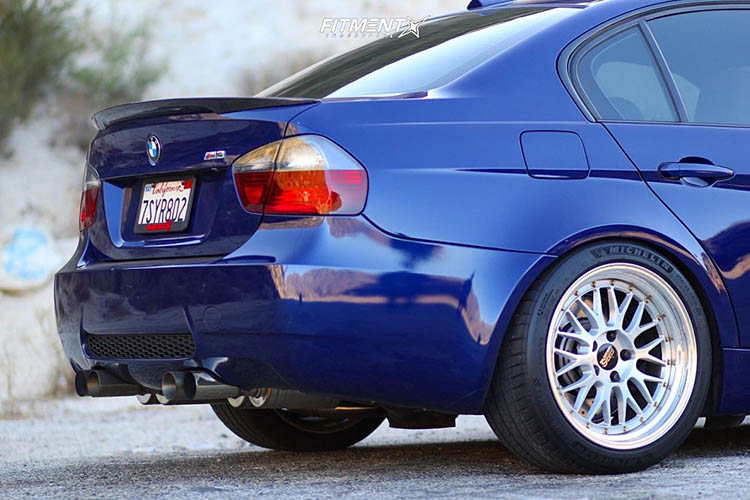
Given that the 335i will be the more tempting proposition to many, given its incredible value-for-money power potential, it could well come at a cost further down the line.
Since many 335i owners don’t have the M3 budget initially, they may instead opt for squeezing as much power out of the N54/N55 engine as possible and then slacking when it comes to spending money on maintenance.
As you’ve probably guessed, this is a recipe for disaster and one that we’ve unfortunately witnessed far more than we’d like. If any further issues arise, you can count on even less money spent on maintenance.
M cars are known for being expensive to maintain, but unlike the 335i, it’s the lack of twin-turbochargers that work in the M3’s favor when it comes to reliability.
With the 335i, it’s not only the turbos themselves that end up potentially causing issues, but also the additional components required.
Water pump, fuel pump, wastegate, and injector-related niggles can often set you back four-figure sums when you least expect it.
We would always be looking to get a comprehensive warranty where possible, and if not, we would plan to put around $3,000 to one side in the first year alone for maintenance.
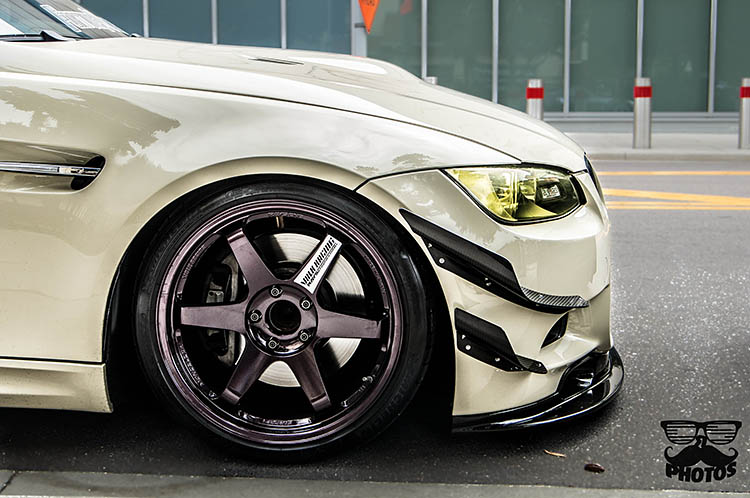
Although the N55 saw a slight improvement in the reliability-department, we would still expect some issues to arise sooner rather than later.
On the other hand, the naturally-aspirated V8 in the M3 is a far simpler engine, with fewer things to potentially go wrong, which is why the S65 took the International Engine of the Year award in 2008, 2009, 2010, 2011, and 2012.
We’re not saying that M3’s are without their issues, though.
Expect to spend more money on oil, and minimal general maintenance, such as servicing.
We’ve heard of some DCT failures, but this seems to have been on cars running forced-induction setups, which may be worth exploring if you intend to go down that route.
Throttle body and rod bearing issues are the main complaints from M3 owners, but they’re certainly far less common than the 335i faults.
Although you’ll have a more substantial initial outlay with the M3, it can quickly stack up if things are to go wrong with the 335i, which could potentially leave you regretting the decision to go with the cheaper, twin-turbo option.
For those who can afford one, the F80/F82 M3 & M4’s have so far proven to be extremely reliable, which could also offer a potential prospect.
When it comes to fuel economy, the 335i is undoubtedly going to be the winner, or perhaps the 335d may even be a consideration for those of you clocking up high mileage.
But let’s face it, you wouldn’t be buying an M3 for fuel economy, anyway!
335i vs M3 – Interior
When it comes to the cabin, the 335i and the M3 are almost identical.
The main difference is the leather seats, with premium Novillo leather in the M3 compared to Dakota leather in the 335i. The M3 seats offer a little more support, but for a track or drift car, we’d be looking at aftermarket racing seats for additional support and weight saving.
Slightly thicker carpets, an improved steering wheel, and some optional carbon-fiber trim upgrades are the only real changes inside, but nothing too exciting or game-changing.
335i vs M3 – Price
Since both cars can on the used market for wildly different prices, you may well be able to cop yourself a bargain with either model, which could change things entirely.
We’ve already provided plenty of considerations for you to decide which car is going to be best suited for your needs, and given the 335i’s potential costs, the M3 may well end up being the better choice - but don’t tell everyone!
Over time, we’ve seen some terribly-maintained 335i’s come up within the $5,000 region, but we wouldn’t be touching them. We’ve also seen M3’s come up for as little as $12,000.
We’re always cautious when buying used cars, but given the cost of maintenance, we recommend being even more careful when purchasing a used E9x. We would always look for impressive service history and warranty wherever possible.
With E46 prices continually rising and F80 prices declining, it could well provide the perfect opportunity to bag a bargain E9x.
Conclusion
Oh jeez, where do we start here?
Both cars provide entirely different opportunities. On the one hand, you have a potential bargain twin-turbo V6 capable of insane power for little money.
On the other, you have a reliable V8 that is simply an incredible all-rounder, becoming extremely reasonable as time progresses.
They offer entirely different driving experiences, with the M3 perfectly refined for the track and great for everyday use and the 335i that can either be a sensible daily or as wild as you want to make it.
If you see yourself as a true automotive enthusiast, then we highly recommend getting behind the wheel of all three for a spirited test drive.
All three? Yes. A stock 335i, a tuned 335i, and an M3.
Although the tuned 335i will probably be the fastest out of them all when it comes to straight-line speed, the comparison doesn’t pay testament to the incredible engineering that has gone into the M3.
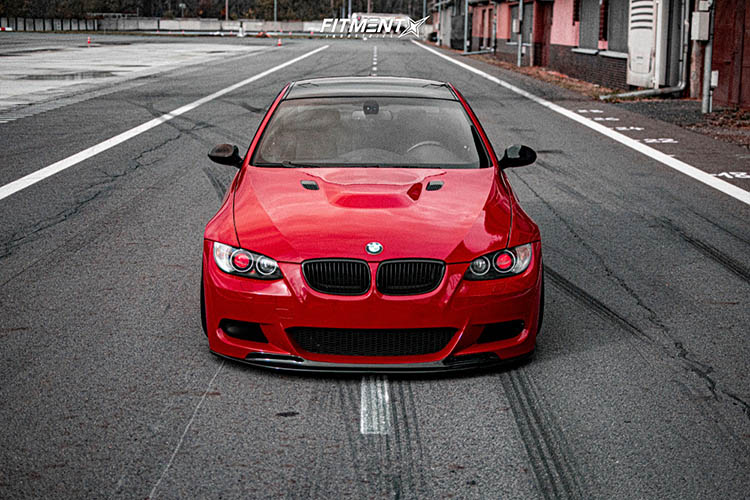
Throw the M3 into the twisties at the track and thrash it to the 8,500rpm redline with the intoxicating exotic acoustics, and you may well end up getting swayed.
If you think you’ll be able to create an M3 track-killing 335i on a budget, then we highly recommend looking into the costs associated with matching the handling and overall package of the M3.
Unless you have a huge budget to throw at a 335i, our personal choice would be to opt for the M3 right away.
There’s so much more than just pure power figures to consider. For us, the M3 ticks so many more boxes overall – providing an almost perfectly-crafted driving experience along with intoxicating sounds.
Suppose you plan on squeezing out all of the power-potential that the 335i has. In that case, the chances are by the time you’ve done the necessary mods and replaced a few parts along the way, you’ll likely find yourself in M3 price territory.
For some 335i owners, they’ve ended up wishing they’d opted for the ‘real thing’ at the very beginning.
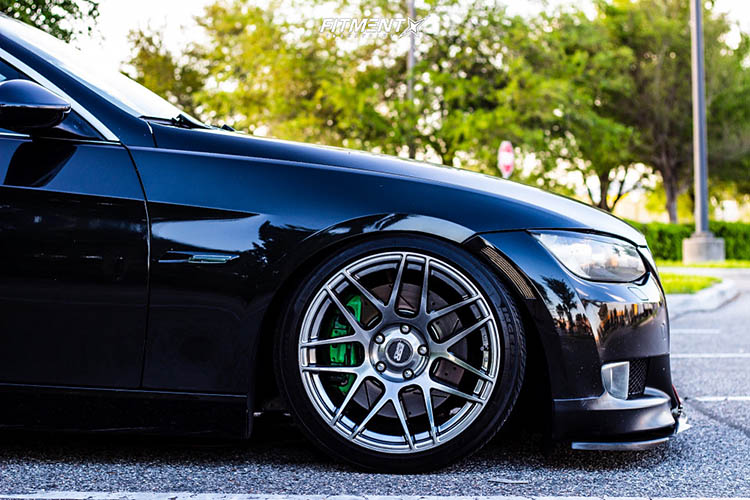
For others, the appeal of beating the ‘real thing’ at the lights makes 335i ownership even more enjoyable!
To us, the M3 feels more impressive, but is it more so than a seriously modified 335i kinda impressive? Only you can decide.
There’s only one thing for it – it’s time for you to get behind the wheel of both cars and take them for a spin!
So, there we have it! We hope that we’ve covered everything you could want to know about the differences between BMW’s 335i and M3 in this guide.
Thank you for reading our BMW 335i vs M3 guide.
If you enjoyed this article, please share it with the buttons at the bottom of your screen. If you’ve found this information useful, then please take a moment to share it with other BMW, 335i, and M3 enthusiasts. We appreciate your support.
Photography credits
We thank the following entities for the use of their photography in this article:

















